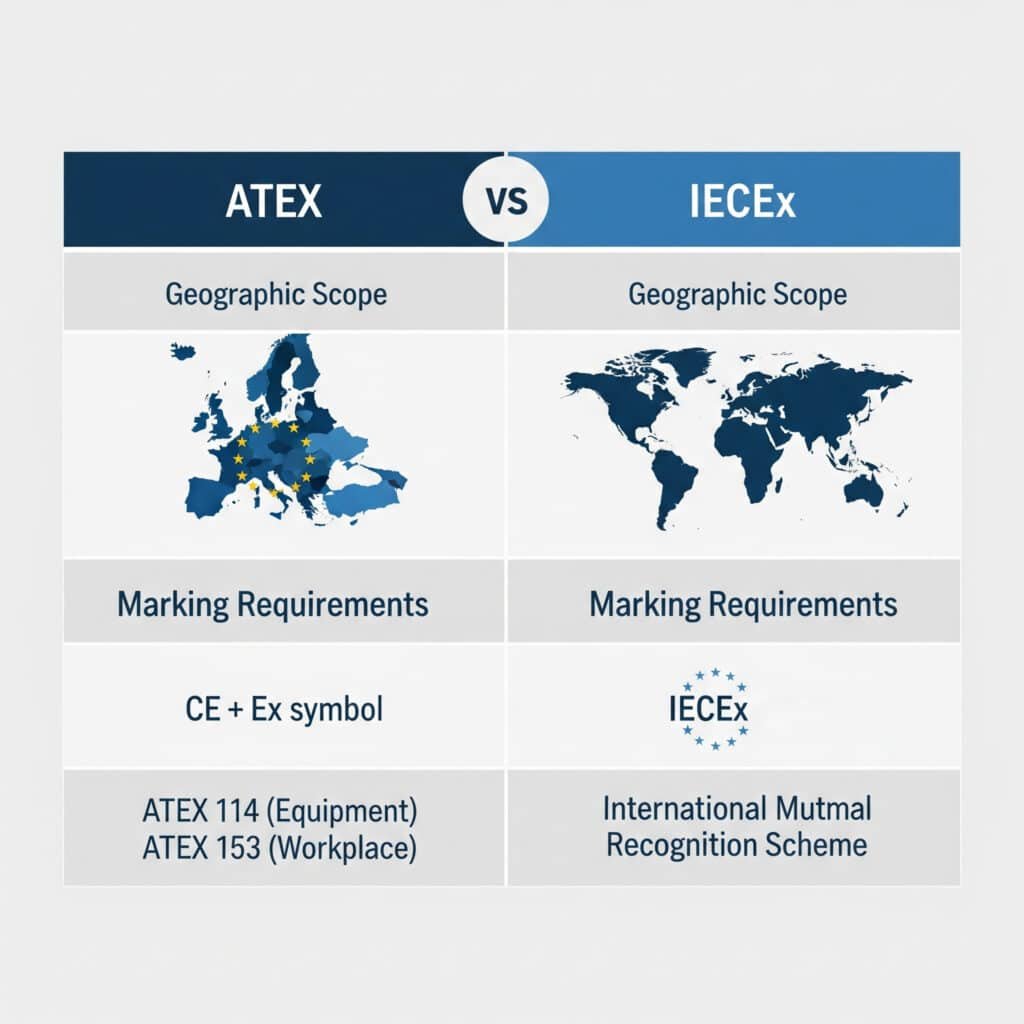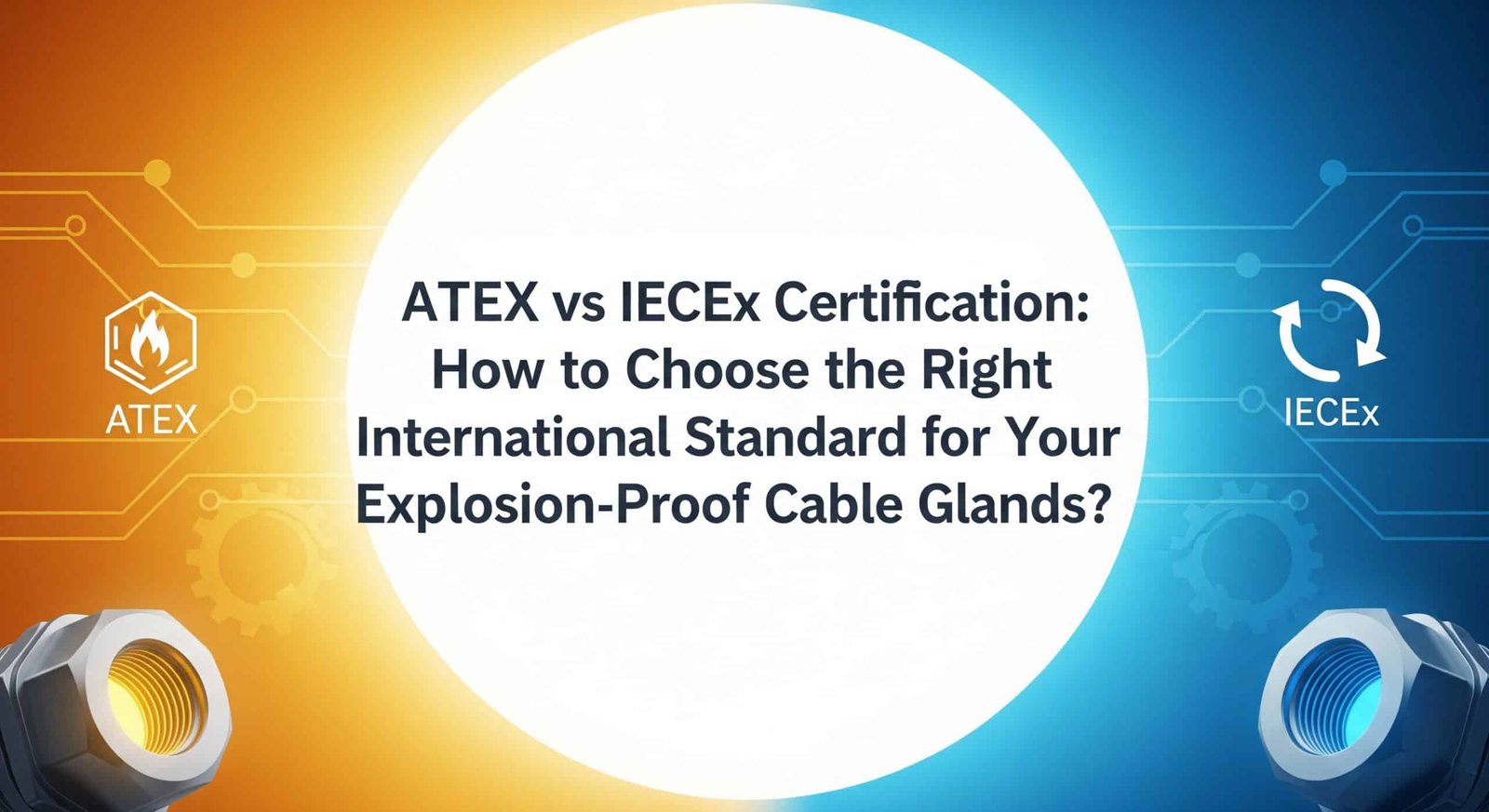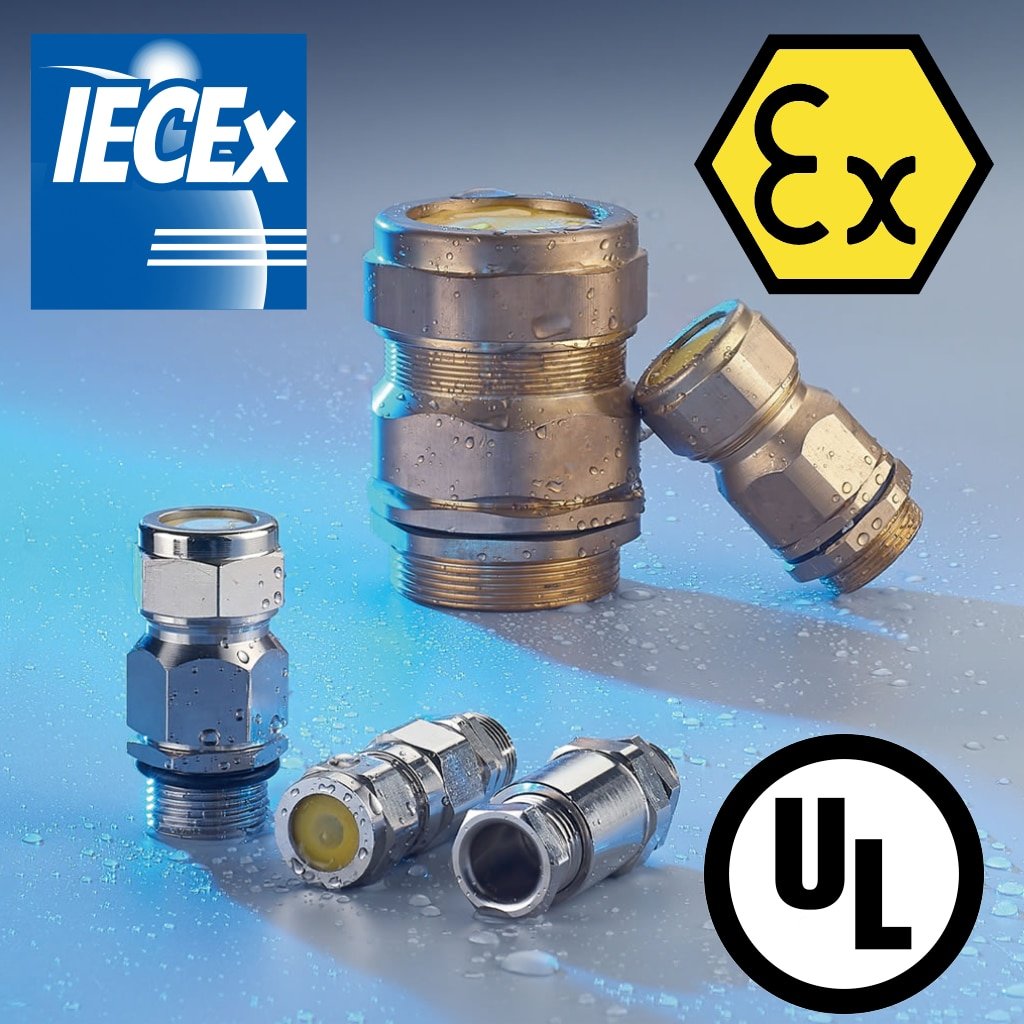Working in hazardous environments? Confused about ATEX and IECEx requirements? You’re not alone in this certification maze.
ATEX applies to European markets while IECEx offers global recognition – both ensure your explosion-proof cable glands meet strict safety standards, but choosing the wrong one could halt your project and cost thousands.
Last month, I had a fascinating conversation with Hassan, a refinery owner from Dubai. He was frustrated because his previous supplier delivered “certified” explosion-proof cable glands that failed inspection. The issue? Wrong certification for his export market. 😉
Table of Contents
- What’s the Real Difference Between ATEX and IECEx Standards?
- Which Certification Does Your Market Actually Require?
- How Do You Verify Authentic ATEX and IECEx Certificates?
- What Are the Cost and Timeline Implications?
What’s the Real Difference Between ATEX and IECEx Standards?
Understanding these standards isn’t just technical knowledge – it’s your project’s lifeline.
ATEX1 is mandatory for European Union markets and focuses on equipment used in explosive atmospheres2, while IECEx3 provides international mutual recognition across 34+ countries, making it ideal for global projects.

ATEX Directive Overview
ATEX (ATmosphères EXplosibles) consists of two directives:
- ATEX 114 (2014/34/EU): Equipment directive for manufacturers
- ATEX 153 (1999/92/EC): Workplace directive for users
| Aspect | ATEX Details |
|---|---|
| Geographic Scope | European Union + EEA countries |
| Marking Requirements | CE marking4 + Ex symbol |
| Zone Classification | Zone 0, 1, 2 (gas) / Zone 20, 21, 22 (dust) |
| Conformity Assessment | Notified Body involvement required |
IECEx System Breakdown
The IECEx (International Electrotechnical Commission Explosive) system operates on mutual recognition:
- IECEx CoC (Certificate of Conformity): Product certification
- IECEx QAR (Quality Assessment Report): Manufacturing quality system
- Global acceptance: 34+ participating countries
Key Technical Differences
When I work with clients like David, our pragmatic procurement manager, I always explain these critical distinctions:
- Testing Standards: ATEX uses EN standards (harmonized European norms), while IECEx uses IEC international standards
- Market Access: ATEX = EU mandatory; IECEx = global voluntary (but often required by end users)
- Certification Bodies: ATEX uses EU Notified Bodies; IECEx uses accredited ExCBs (Certification Bodies)
Which Certification Does Your Market Actually Require?
This question determines your entire compliance strategy and budget allocation.
For EU sales, ATEX is legally mandatory. For global markets including Asia, Middle East, and Americas, IECEx provides broader acceptance and often faster market entry.
Market-Specific Requirements
European Union Markets:
- ATEX certification is legally required
- No exceptions for industrial equipment
- CE marking must be visible on products
- Technical documentation in local language often required
Global Markets (Non-EU):
Asia-Pacific Region: IECEx is increasingly preferred in countries like Australia, Singapore, and Malaysia, especially for oil & gas installations.
Middle East: Both certifications are generally accepted, but IECEx is gaining preference due to its international recognition and easier cross-border project management.
Americas: Local standards still dominate, but IECEx recognition is growing rapidly, particularly for multinational projects.
Africa: IECEx is gaining significant traction in the oil & gas sector, with many new projects specifically requiring IECEx certified equipment.
Real-World Case Study
Hassan’s refinery project taught me a valuable lesson. He needed explosion-proof cable glands for a multi-national petrochemical facility with equipment from German, American, and Japanese suppliers. Initially, he considered ATEX-only products to save costs.
However, I recommended IECEx certification because:
- His maintenance team included engineers from 6 different countries
- Future expansion planned for Southeast Asia
- Insurance requirements favored internationally recognized standards
Result: 15% higher initial cost, but 40% faster approval process across all jurisdictions.
How Do You Verify Authentic ATEX and IECEx Certificates?
Certificate fraud is more common than you think – I’ve seen too many projects delayed by fake documentation.
Always verify certificates directly through official databases: NANDO for ATEX and IECEx website for IECEx certificates. Look for specific certificate numbers, expiry dates, and authorized representative details.
ATEX Certificate Verification Steps
Check NANDO Database5
– Visit ec.europa.eu/growth/tools-databases/nando/
– Verify Notified Body authorization
– Cross-reference certificate numbersEssential Certificate Elements
– Unique certificate number
– Clear product identification
– Authorized representative in EU
– Valid expiry date (typically 5 years)
IECEx Verification Process
| Verification Step | Action Required |
|---|---|
| Database Check | Visit iecex.com certificate database |
| ExCB Verification | Confirm issuing body accreditation |
| QAR Cross-Check | Verify manufacturer’s quality system |
| Scope Validation | Ensure certificate covers your specific application |
Red Flags to Watch For
From my experience with David’s quality concerns, here are immediate warning signs:
- Generic product descriptions instead of specific model numbers
- Missing technical drawings or incomplete test reports
- Unusually low prices compared to certified competitors
- Reluctance to provide original certificate copies
- Certificates from unknown or unaccredited bodies
At Bepto, we provide complete certificate packages including:
- Original ATEX/IECEx certificates
- Technical construction files
- Quality system documentation
- Test reports from accredited laboratories
What Are the Cost and Timeline Implications?
Budget planning requires understanding the full certification landscape – not just initial costs.
ATEX certification typically costs $15,000-50,000 and takes 3-6 months, while IECEx ranges $20,000-60,000 with 4-8 month timelines. However, IECEx’s global recognition often provides better ROI for international manufacturers.
Detailed Cost Breakdown
ATEX Certification Costs:
- Initial Assessment: $3,000-8,000
- Testing & Evaluation: $8,000-25,000
- Notified Body Fees: $2,000-10,000
- Technical File Preparation: $2,000-7,000
- Annual Surveillance: $1,500-3,000
IECEx Certification Costs:
- CoC Application: $4,000-12,000
- Laboratory Testing: $10,000-30,000
- QAR Assessment: $3,000-8,000
- ExCB Review Fees: $3,000-10,000
- Ongoing Maintenance: $2,000-5,000/year
Timeline Considerations
Based on our certification experience at Bepto:
Fast Track Options (Premium Service):
- ATEX: 2-3 months possible with dedicated resources
- IECEx: 3-4 months with experienced ExCB
Standard Timeline:
- Documentation preparation: 2-4 weeks
- Testing phase: 4-8 weeks
- Review and approval: 4-12 weeks
- Certificate issuance: 1-2 weeks
ROI Analysis for Different Scenarios
Scenario 1: EU-Only Sales
- ATEX certification: Required investment
- Market access: Immediate EU compliance
- Recommendation: ATEX sufficient
Scenario 2: Global Expansion
- IECEx certification: Higher initial cost but broader access
- Market penetration: 34+ countries recognition
- Long-term savings: Avoid multiple local certifications
Conclusion
Choose ATEX for EU markets, IECEx for global reach – both ensure safety, but market strategy determines your certification path.
FAQs About ATEX and IECEx Certification
Q: Can I use ATEX certified products outside Europe?
A: ATEX products can be used globally, but many countries don’t officially recognize ATEX certification. IECEx provides broader international acceptance and may be preferred by local authorities and end users.
Q: How long do ATEX and IECEx certificates remain valid?
A: ATEX certificates typically last 5 years with annual surveillance audits. IECEx certificates don’t expire but require ongoing quality system maintenance and periodic reviews to maintain validity.
Q: What happens if my supplier’s certificate is fake or expired?
A: Using non-compliant equipment in hazardous areas violates safety regulations and insurance requirements. Always verify certificates through official databases and request updated documentation before shipment.
Q: Can I get both ATEX and IECEx certification for the same product?
A: Yes, many manufacturers obtain both certifications to maximize market access. However, this increases costs and complexity. Consider your target markets carefully before pursuing dual certification.
Q: Which certification is more stringent – ATEX or IECEx?
A: Both standards maintain equivalent safety levels but use different testing procedures and documentation requirements. Neither is inherently more stringent; they’re designed for different regulatory frameworks while ensuring comparable protection levels.
-
Review the official legislation and guidance on the ATEX Directive for equipment used in potentially explosive atmospheres. ↩
-
Learn from the UK’s Health and Safety Executive about what constitutes a dangerous explosive atmosphere and how to control the risks. ↩
-
Explore the IEC System for Certification to Standards Relating to Equipment for Use in Explosive Atmospheres. ↩
-
Understand the conformity assessment procedures and requirements for affixing the CE mark on products sold in the EU. ↩
-
Access the official NANDO database to search for and verify European Union Notified Bodies for product certification. ↩



